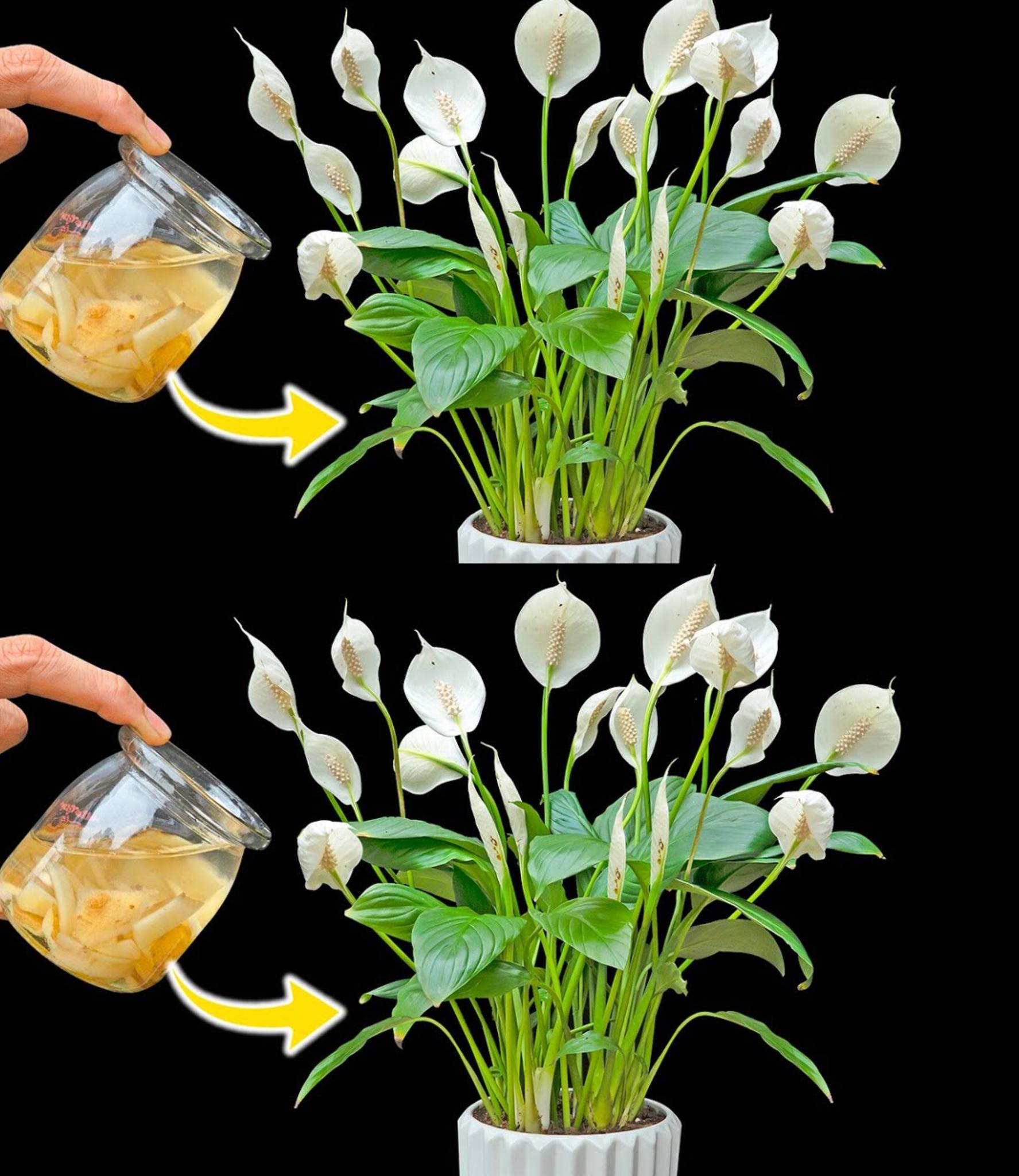ADVERTISEMENT
Peace Lily: The Secret Ingredient That Makes It Bloom for Up to 10 Years in a Row
The Peace Lily (Spathiphyllum) is one of the most popular and beloved indoor plants, known for its elegant white blooms, glossy green leaves, and low-maintenance care. While it’s a resilient plant, many Peace Lily owners often struggle with getting it to bloom consistently. What if we told you that there is a simple ingredient that can help your Peace Lily bloom year after year—sometimes for up to 10 years in a row? If you’re eager to see your Peace Lily bloom like never before, read on to discover the secret to a flourishing, long-lasting bloom cycle.
The Peace Lily’s Natural Beauty
Peace Lilies are native to tropical regions of the Americas and Southeast Asia. They are known for their striking white spathes (modified leaves) that surround the actual flower spike, giving the impression of a “blooming” flower. While the Peace Lily is an excellent air purifier, making it perfect for indoor spaces, its ability to bloom beautifully is often what attracts plant enthusiasts.
Peace Lilies are relatively easy to care for, thriving in moderate to low light and requiring only occasional watering. However, unlike other flowering plants, Peace Lilies don’t always bloom regularly. Getting them to bloom consistently is the key to their lasting beauty.
The Secret Ingredient: High-Quality Fertilizer
Believe it or not, the secret to getting your Peace Lily to bloom for up to 10 years in a row lies in the fertilizer you use. While Peace Lilies don’t require a lot of fertilizer, they do need the right kind, applied at the right time, to encourage consistent blooms. A high-quality balanced fertilizer with the right nutrients can ensure that your Peace Lily gets all the essential vitamins and minerals needed for vibrant and sustained blooming.
Why Does Fertilizer Matter for Blooms?
Fertilizer is essential because it supplies plants with the nutrients they need to grow and flower. Peace Lilies, like all plants, require three main nutrients for healthy growth: Nitrogen (N), Phosphorus (P), and Potassium (K)—commonly referred to as NPK.
- Nitrogen (N): Helps with healthy leaf and stem growth. Peace Lilies thrive on lush green leaves, but too much nitrogen can actually hinder flowering.
- Phosphorus (P): Essential for root development, strong stems, and, most importantly, flowering. This is the nutrient responsible for encouraging blooms, which is why it’s crucial for Peace Lilies.
- Potassium (K): Supports overall plant health and helps with disease resistance, ensuring your plant remains strong throughout its blooming cycle.
A balanced fertilizer with a higher ratio of phosphorus will help your Peace Lily produce flowers over an extended period. The right formula also ensures that the plant can continue to thrive and bloom year after year.
How to Use Fertilizer for Consistent Blooms
If you want your Peace Lily to bloom consistently and for as long as possible, here’s how to properly use fertilizer:
1. Choose the Right Fertilizer
For the best results, look for a balanced, water-soluble fertilizer with a ratio of about 10-30-10 (NPK). The higher phosphorus content (middle number) will encourage flower production. Avoid using fertilizers that are too high in nitrogen, as this may lead to lush foliage growth at the expense of blooming.
2. Apply During the Growing Season
Fertilizing during the growing season—typically from spring to early fall—is essential for promoting blooms. During this time, the Peace Lily is actively growing and can use the extra nutrients to produce flowers.
- Frequency: Apply fertilizer once a month during the growing season. Over-fertilizing can lead to burnt roots or an imbalance in nutrients, so stick to the recommended dosage on the product label.
- Dilute the Fertilizer: Always dilute the fertilizer to about half strength to prevent overfeeding. Too much fertilizer can damage the roots and stress the plant.
3. Fertilize Less in Winter
In the winter months, Peace Lilies generally go dormant or have slower growth. It’s a good idea to reduce or stop fertilizing during this time, as the plant needs less energy. You can resume regular fertilization in the spring when the plant begins to grow actively again.
For Complete Cooking STEPS Please Head On Over To Next Page Or Open button (>) and don’t forget to SHARE with your Facebook friends
